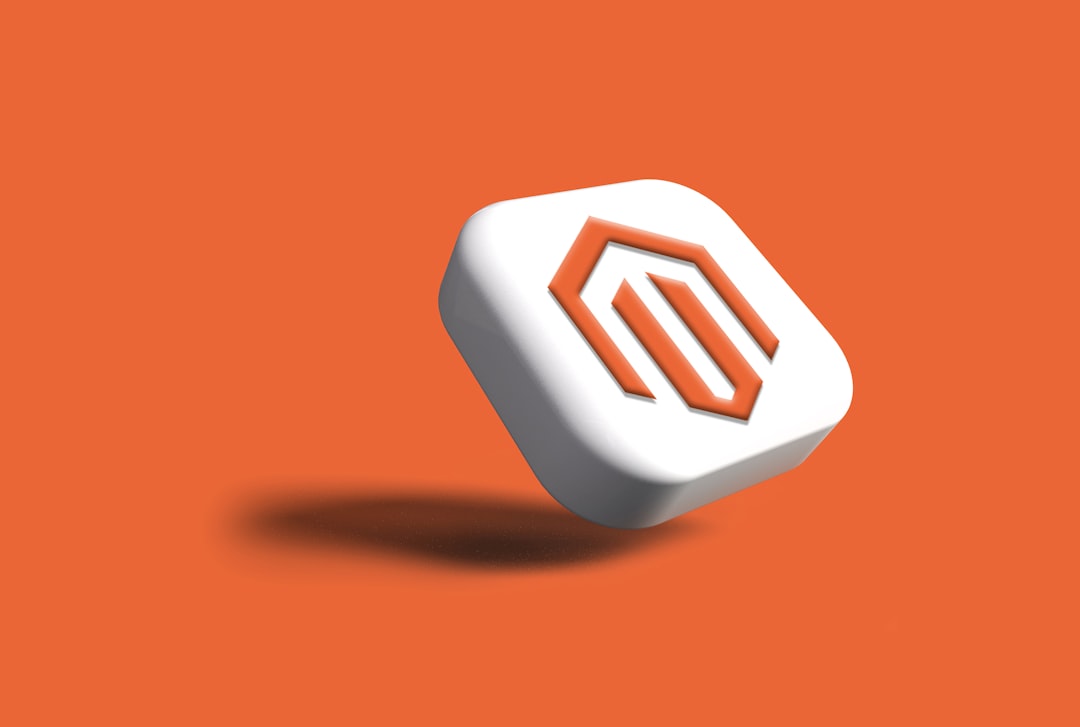The digital world has recently been engulfed in a novel phenomenon known as Non-Fungible Tokens, or NFTs. Artisans, investors, and collectors are talking a lot about these distinctive digital assets because of their enormous rise in popularity. To put it simply, NFTs are digital assets that represent ownership or proof of authenticity of a unique item or piece of content, such as artwork, music, videos, or even virtual real estate.
Key Takeaways
- NFTs are digital collectibles that use blockchain technology to verify ownership and authenticity.
- Top NFT marketplaces include OpenSea, Nifty Gateway, and SuperRare.
- NFT art is gaining popularity and disrupting the traditional art world.
- NFT gaming is revolutionizing the industry by allowing players to truly own in-game assets.
- Musicians are using NFTs to monetize their work and connect with fans in new ways.
But what exactly are NFTs, and why are they so popular? NFTs are indivisible and cannot be traded like-for-like with other cryptocurrencies, such as Ethereum or Bitcoin, which are fungible & can be exchanged one-to-one. Every NFT has a unique value that cannot be copied or substituted. Blockchain is the technology that powers NFTs; it is a transparent, decentralized digital ledger that keeps track of transactions across several computers. NFTs are tamper-proof and resistant to fraud because blockchain ensures their security and immutability. This technology has brought about a new degree of trust and transparency in the digital world by revolutionizing the ways in which digital assets are owned, traded, and purchased.
That being said, there are a number of reasons why NFTs have gained such notoriety. First off, NFTs give creators & artists a fresh opportunity to make money off of their work. Because digital works could be easily copied and shared without permission, artists used to frequently struggle to make a living wage from them. By avoiding middlemen and guaranteeing that they get a fair portion of the proceeds, NFTs enable artists to sell their creations to collectors directly.
Subsequently, NFTs provide collectors with an exclusive and singular ownership experience. Having an NFT entitles you to a unique digital asset that cannot be copied or replaced. The status and bragging rights that come with owning a rare and valuable NFT have drawn collectors who are willing to pay a premium because of its exclusivity & scarcity. Finally, the media attention and hype surrounding NFTs have contributed to their rise in popularity. A larger audience has been drawn to NFTs & the demand for these digital collectibles has been fueled by high-profile sales & celebrity endorsements.
| Date | Headline | Source |
|---|---|---|
| June 1, 2021 | NFT Artwork Sells for Record 69 Million at Christie’s Auction | CNN |
| June 15, 2021 | NBA Top Shot NFT Sales Reach 700 Million | Forbes |
| July 7, 2021 | Twitter CEO Jack Dorsey Sells First Tweet as NFT for 2.9 Million | BBC News |
| July 22, 2021 | Virtual Land in Decentraland Sells for 913,000 | CoinDesk |
| August 10, 2021 | Christie’s to Auction First NFT-Curated Art Exhibition | The New York Times |
A number of internet marketplaces have become the preferred venues for purchasing and selling digital collectibles as a result of the rising demand for NFTs. The user-friendly interface & secure environment offered by these marketplaces allow artists, collectors, and investors to transact with NFTs. Let’s examine and contrast the costs & features of a few of the leading NFT marketplaces. 1. OpenSea is a well-known & expansive NFT marketplace that provides a vast selection of digital collectibles such as virtual real estate, artwork, & gaming items. It supports transactions in multiple cryptocurrencies and has an easy-to-use interface. OpenSea is an appealing choice for both buyers & sellers because it levies a 2.5 percent fee on each transaction. 2.
Creating, purchasing, and selling NFTs is possible on the decentralized marketplace known as Rarible. With its special “minting” feature, which enables artists to produce their own NFTs without any prior coding experience, it runs on the Ethereum blockchain. With an extra 2 percent charged to creators, Rarible takes a 2 percent commission on every sale. 3. SuperRare is a marketplace dedicated to digital artwork that is carefully curated. Exhibiting fine, limited-edition works by both established and up-and-coming artists is its goal.
SuperRare charges a 15 percent fee on every sale, with 10 percent going to the artist and 5 percent to the platform. The platform runs on the Ethereum blockchain. 4. NBA Top Shot is an official licensed NBA collectibles marketplace offering NFTs. With the ability to own and exchange digital moments from NBA games, it provides basketball fans with a distinctive and immersive experience. The NBA Players Association receives two percent of the five percent fee from NBA Top Shot, while Dapper Labs, the company that created the platform, also receives two percent.
It is imperative to conduct thorough research and take into account various factors, including the marketplace’s reputation, the caliber of the assets being sold, and the associated fees, when purchasing and disposing of NFTs. The market can be extremely speculative and prone to abrupt price swings, so it’s also critical to be aware of the risks and volatility that could come with investing in NFTs. The arts have been one of the most notable areas where NFTs have had an impact.
NFTs have challenged conventional ideas of art ownership and distribution by giving artists new opportunities to produce, market, and make money from their digital artwork. Let’s examine how digital art has become more popular and what that means for the art world. The earliest examples of digital art date back to the 1960s, when artists started experimenting with interactive installations and computer-generated imagery. The widespread recognition and acceptance of digital art, however, did not occur until the development of the internet and digital technologies. NFTs have given digital artists a breakthrough by enabling them to keep control over their creations & sell their work directly to collectors.
Since it could be readily duplicated and shared without the artists’ consent, this has been a game-changer for those who had previously struggled to make a living from their digital art. There are some amazing success stories in the sale of digital art as NFTs. The NFT piece “Everydays: The First 5000 Days” by digital artist Beeple brought in an incredible $69 million at a Christie’s auction in March 2021.
This transaction not only made Beeple incredibly famous, but it also challenged preconceived ideas about the value and ownership of art by introducing NFT art into the mainstream. Debatable has been the effect of NFT art on the traditional art market. NFT art is seen by some as a bubble that will eventually burst, but it is also seen by others as a paradigm shift in the art world. By removing the need for galleries or middlemen, NFTs have democratized the art market and made it possible for artists from all backgrounds to exhibit and sell their work.
However, because the blockchain technology required to produce & trade NFTs uses a lot of energy, there are worries regarding the environmental impact of NFT art. The sustainability and environmental friendliness of digital art are allegedly compromised by the carbon footprint of NFTs, according to critics. The gaming sector is another one that NFTs have completely transformed. For virtual gaming items, NFTs have brought the ideas of true ownership and scarcity, opening up new possibilities for players, developers, and investors.
Let’s examine more closely at how blockchain technology is transforming the gaming sector. Games that use NFTs as in-game currency and are developed on blockchain technology are referred to as blockchain gaming. Virtual collectibles, virtual real estate, and virtual characters and weapons are all examples of these assets. NFTs grant players real ownership and the capacity to exchange and sell their virtual assets, in contrast to traditional gaming items that are owned and managed by game developers.
New revenue streams have been made available to both developers & players in the gaming industry with the introduction of NFTs. Through the direct sale of NFTs to players, game developers can generate revenue from their creations, and players can gain tangible rewards by trading or selling their virtual assets. As a result, players now have more control over their gaming experiences and can make money from the time and skills they invest in the game, thanks to the thriving and decentralized gaming ecosystem. A number of prosperous NFT gaming ventures have surfaced in the past few years. One of the highest-grossing NFT games is Axie Infinity, a blockchain-based game that lets players breed, battle, & amass virtual creatures known as Axies.
The game has become incredibly popular. Through engagement in tournaments and battles, players can gain in-game tokens known as Axie Infinity Shards (AXS), which they can then trade or stake for more rewards. Decentraland, a virtual reality platform constructed on the Ethereum blockchain, is another noteworthy example. Players are able to create their own virtual worlds and purchase, trade, & sell virtual land in Decentraland.
NFTs, which are tradable on the market, serve as a representation of Decentraland’s virtual land. Due to this, a flourishing virtual real estate market has emerged where users can make money off of the virtual land they own. NFT-powered decentralized gaming ecosystems have a lot of potential. It makes it possible to design open, interoperable game worlds in which users can transfer their assets between various platforms & games with ease.
This could cause a stir in the gaming industry, which is traditionally typified by closed ecosystems & restricted player ownership rights. Traditional music distribution channels, like physical sales and streaming platforms, have been a declining source of revenue for the music industry for a long time. NFTs have become known as a possible way for musicians to get paid for their work and reclaim ownership of their songs. Let’s look at the NFTs that musicians are utilizing to make money off of their work. With streaming platforms overtaking other music consumption options, the music industry has experienced a dramatic upheaval in recent years.
Musicians have seen a decrease in income as a result of streaming, even though it has increased music accessibility for a worldwide audience. Streaming platforms only pay artists a pittance per stream. By offering exclusive digital products to fans directly, like albums, singles, or even concert tickets, NFTs give musicians a new avenue to make money off of their work.
By doing this, musicians are able to avoid using conventional middlemen like record labels and streaming services and keep a higher portion of the revenue. Many musicians have used NFTs to effectively monetize their music. The musician Grimes made over $6 million in just 20 minutes by selling a collection of digital artworks & music as NFTs in March 2021. This transaction showed how musicians could profit greatly from the exclusivity and hype surrounding NFTs. Also, NFTs give musicians the chance to interact creatively & novelly with their fans.
For example, some musicians have used NFTs to offer exclusive experiences, such as backstage passes, meet-and-greets, or even the chance to collaborate on a song. Along with giving musicians another source of income, these exclusive experiences strengthen the bond between musicians and fans. But NFT music is not without its problems and issues. The possibility of music distribution without authorization & copyright violations is one of the key worries. NFTs don’t always deal with copyright infringement, even though they offer authenticity and ownership verification. It is imperative for musicians & other industry participants to guarantee the implementation of appropriate licensing and rights management mechanisms in order to safeguard their proprietary works.
The desire of sports fans to possess a fragment of their preferred team’s or athlete’s past has always made sports memorabilia a sought-after collectible. As a unique & digital way for sports fans to own and trade sports-related assets, NFTs have given sports collectibles a new dimension. Let’s investigate what lies ahead for sports memorabilia and collectibles in the NFT world. Physical products like trading cards, game-used equipment, & autographed jerseys have long dominated the sports memorabilia market.
These tangible collectibles have a rich past and are sentimental items for enthusiasts, but they also have drawbacks like the possibility of theft, damage, or counterfeiting. With the introduction of NFTs, sports fans can now own and trade digital assets that are representations of their favorite players or teams, moments, or even virtual experiences. This has ushered in a new era of sports collectibles. Videos, pictures, and even virtual reality experiences can be included in these digital assets.
Sports memorabilia from the NFL has enormous potential. A game-winning shot or a record-breaking performance can now be owned by fans in a digital format that is simple to share and validate. As well as providing fans with new & creative ways to interact with their favorite teams and athletes, NFTs give them exclusive access to behind-the-scenes content and virtual meet-and-greets.
There have already been a number of fruitful NFT sports sales. The National Basketball Association (NBA) introduced NBA Top Shot in April 2021, a website that enables fans to purchase & exchange officially sanctioned NBA collectibles in the form of NFTs. Millions of NFTs are being bought and sold on NBA Top Shot, a platform that has seen tremendous growth in popularity. NFTs have a big chance of upending the established sports memorabilia industry. By removing the possibility of fake or fraudulent goods, NFTs provide a more transparent and safe method of authenticating and trading sports collectibles. Also, NFTs offer a worldwide sports collectibles market, enabling enthusiasts from all corners of the globe to partake in the trade and acquire a piece of their preferred sports history.
People who own real estate can benefit from a tangible asset that increases in value over time, making it a sound investment option for many. The ability to own and trade virtual properties in a virtual world is made possible by NFTs, which have added a new dimension to real estate ownership. Let’s investigate how NFTs are causing a stir in the real estate sector.
High entry barriers, such as significant capital requirements & intricate legal procedures, have historically defined the real estate market. Because NFTs don’t require significant upfront costs or complicated legal issues, they have the potential to democratize real estate ownership by enabling anyone to own and trade virtual properties. In virtual reality platforms or digital worlds, NFTs stand for virtual properties. These properties can be represented as virtual cities, buildings, or even land.
Like real estate ownership, owning a virtual property as an NFT offers owners a special and exclusive experience. Real estate in NFT has enormous potential. Profiting from virtual real estate holdings is possible for individuals through the purchase, sale, & exchange of virtual properties on online marketplaces. Virtual properties can also be developed and made profitable, giving their owners additional sources of income.
Numerous NFT real estate transactions have already been accomplished with success. A virtual plot of land in the online community of Decentraland sold in February 2021 for an incredible $1.05 million. The potential for virtual real estate to grow into a significant asset attracted buyers to this digital property, dubbed “Genesis Plaza.”. In a similar vein, a virtual estate in the metaverse game “The Sandbox” sold for $650,000 in March 2021. These sales show the rising interest in & demand for NFT real estate as more people become aware of the special chances and possible profits found in the digital space. As more people come to terms with the idea of owning virtual properties, we should expect to see more noteworthy developments & sales in this developing market.
If you’re interested in diving deeper into the world of NFTs, you won’t want to miss this informative article on the NFT Newsletter. In their latest piece, they explore the future of NFTs and how they are revolutionizing various industries. To further enhance your understanding, check out their related article on 10 simple tips to improve your test-taking skills. Whether you’re a seasoned collector or just starting out, these resources will provide valuable insights and help you navigate the exciting world of NFTs. Don’t miss out – read more at NFT Newsletter.
FAQs
What is NFT?
NFT stands for Non-Fungible Token. It is a unique digital asset that is stored on a blockchain and cannot be replicated or exchanged for something else.
What is NFT News?
NFT News is a platform that provides the latest news and updates about the world of NFTs. It covers topics such as NFT art, gaming, sports, and collectibles.
What are some examples of NFTs?
Some examples of NFTs include digital art, music, videos, and virtual real estate. They can also be used in gaming and sports as collectibles or to represent ownership of in-game items.
How do NFTs work?
NFTs are created using blockchain technology, which allows for secure and transparent ownership of digital assets. Each NFT is unique and has a specific value that is determined by the market.
What is the value of NFTs?
The value of NFTs varies depending on the demand for the specific asset. Some NFTs have sold for millions of dollars, while others may only be worth a few dollars.
How can I buy or sell NFTs?
NFTs can be bought and sold on various online marketplaces, such as OpenSea, Rarible, and Nifty Gateway. They are typically purchased using cryptocurrency, such as Ethereum.
What are the benefits of NFTs?
NFTs provide a new way for creators to monetize their digital content and for collectors to own unique digital assets. They also offer a level of transparency and security that traditional ownership of digital assets does not provide.











